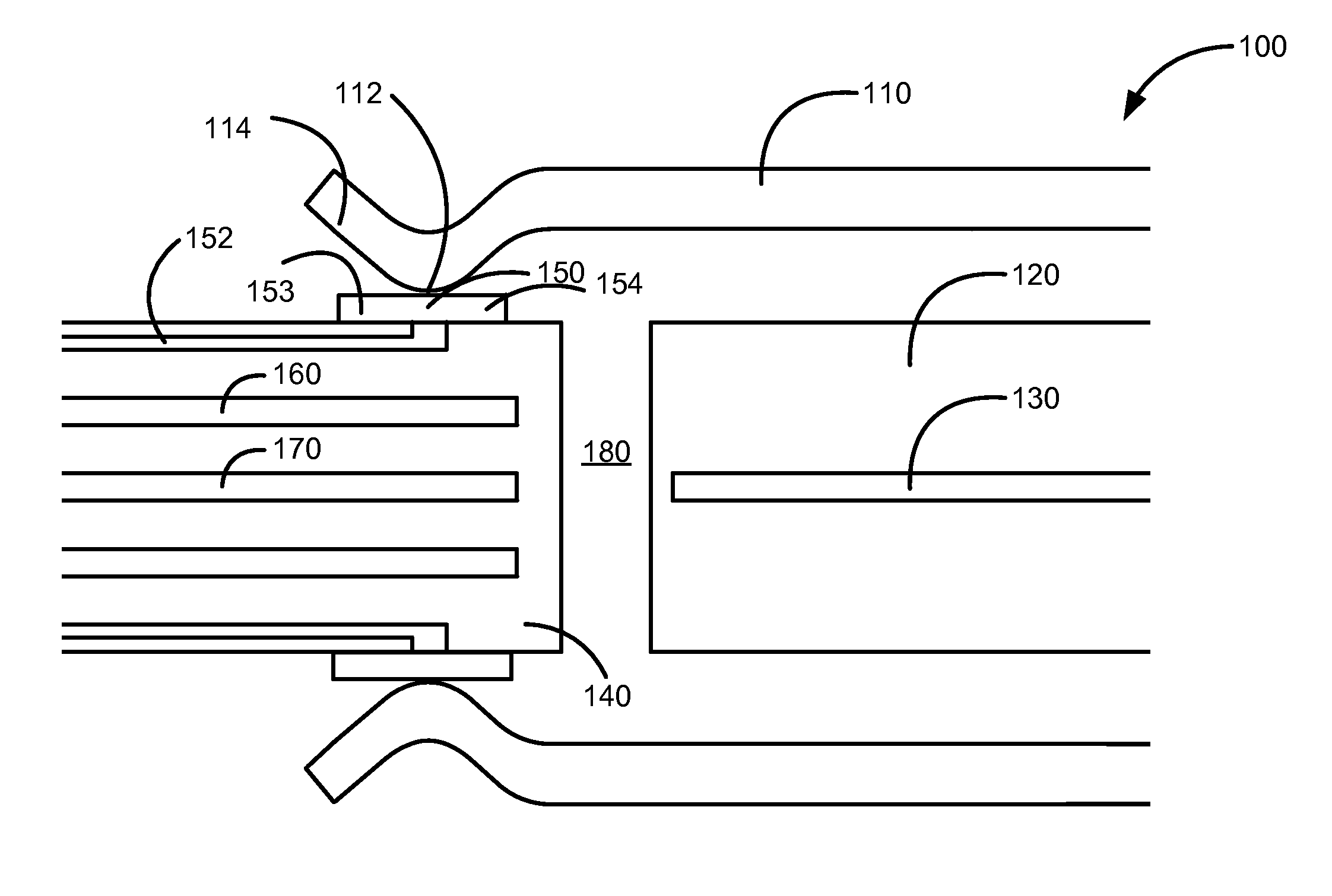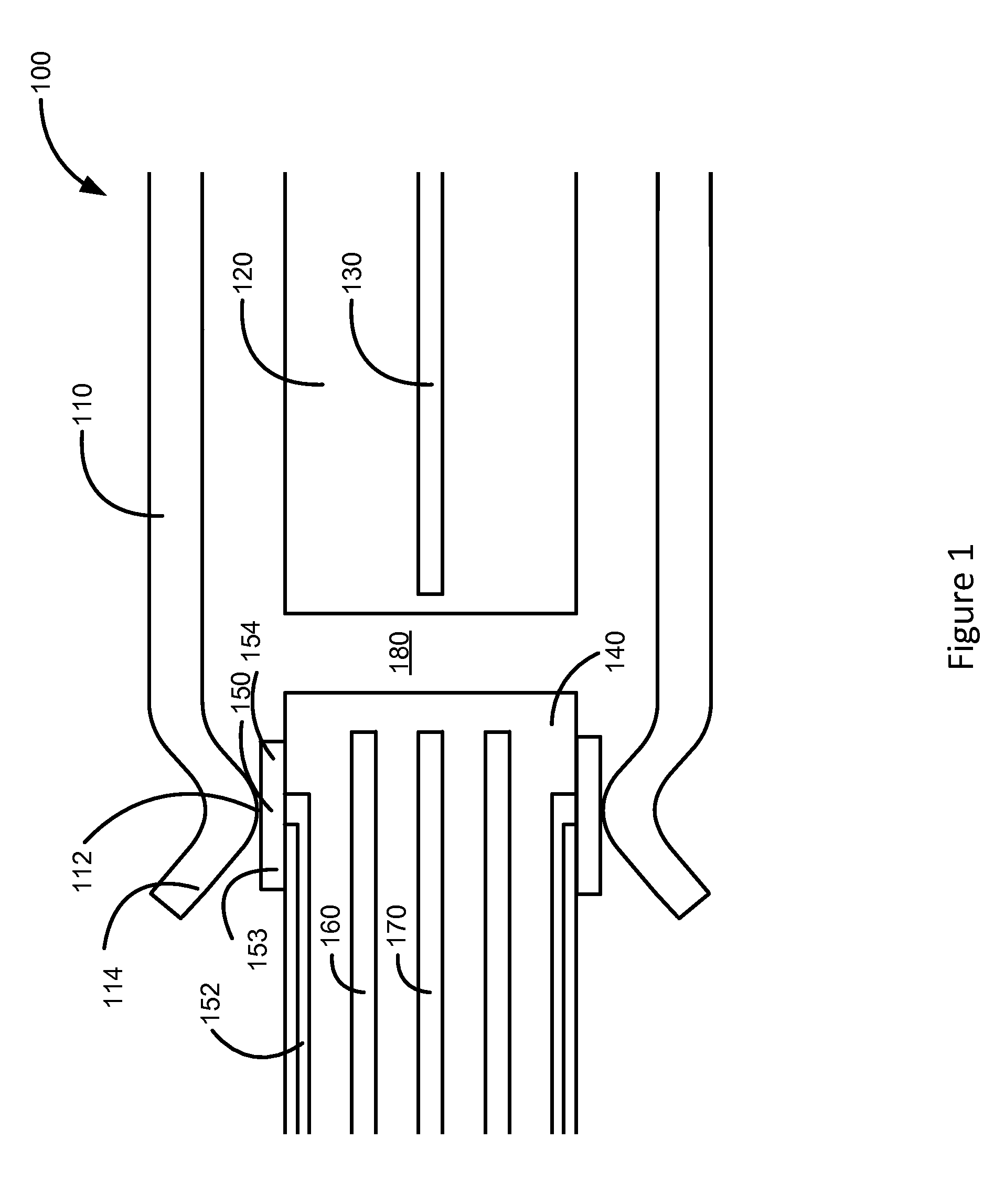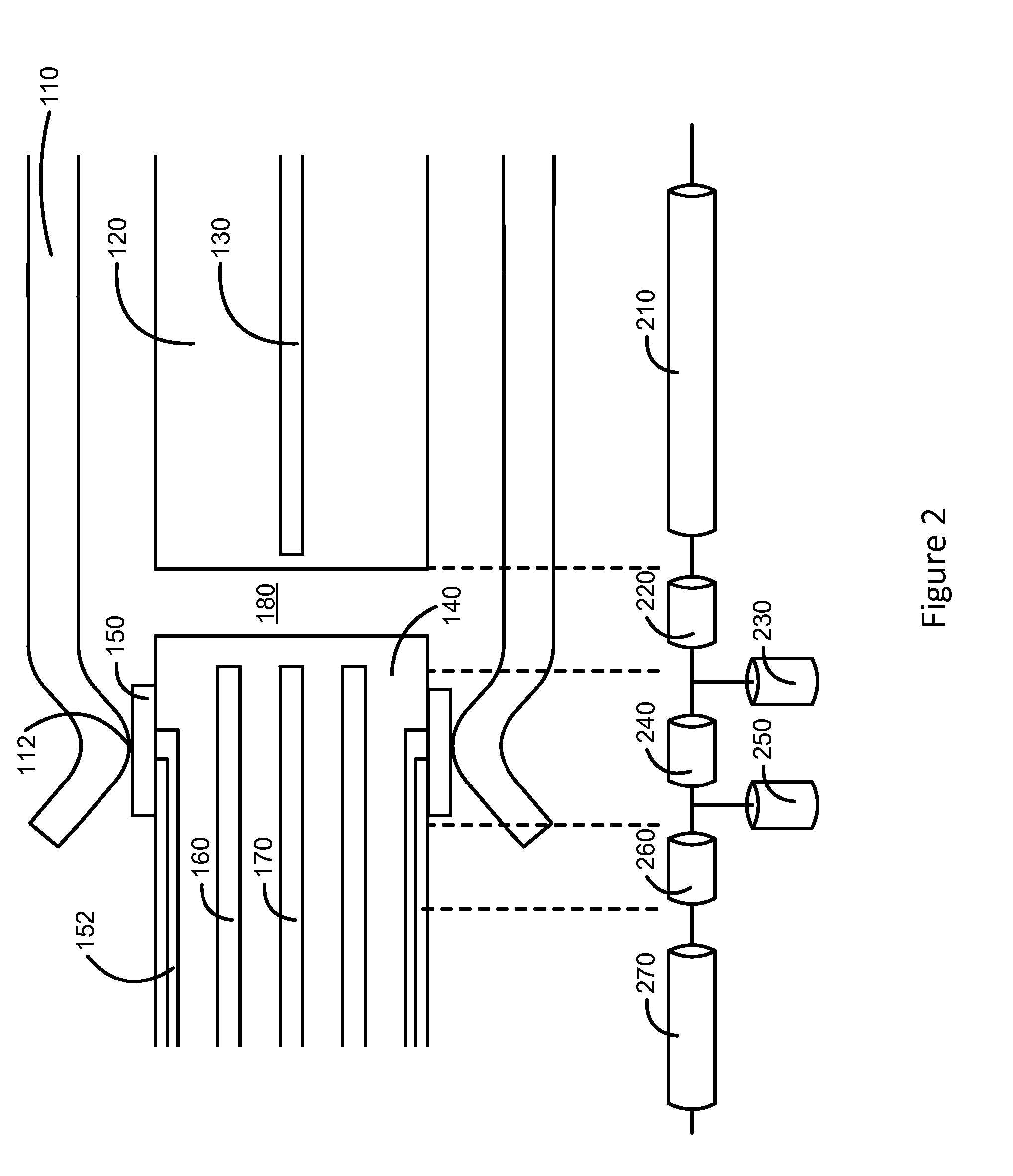Connector system impedance matching
a technology of connecting system and impedance matching, which is applied in the direction of coupling device details, coupling device connection, electric discharge lamp, etc., can solve the problems of increasing the impedance of the signal path at that point, the impedance of the signal path may have various errors or fluctuations along its length, and the impedance of the signal path may vary along the signal path. , to achieve the effect of increasing the impedance, increasing the impedance, and decreasing the impedan
- Summary
- Abstract
- Description
- Claims
- Application Information
AI Technical Summary
Benefits of technology
Problems solved by technology
Method used
Image
Examples
Embodiment Construction
[0050]FIG. 1 illustrates a connector system according to an embodiment of the present invention. This figure, as with the other included figures, is shown for illustrative purposes and does not limit either the possible embodiments of the present invention or the claims.
[0051]In this figure, a portion of a connector insert has been inserted into a connector receptacle. Shown are connector insert contacts 110 supported by connector insert housing 120. Connector insert contacts 110 may electrically connect to conductors in a cable (not shown.) A central ground plane 130 may be located in connector insert housing 120 and may be connected to the cable as well. The connector insert may be inserted into a connector receptacle including tongue 140. Tongue 140 may support a number of contacts 150. Traces 152 may electrically connect contacts 150 to circuitry inside a device housing tongue 140. Tongue 140 may further include one or more planes 160 and 170. Planes 160 and 170 may be power sup...
PUM
 Login to View More
Login to View More Abstract
Description
Claims
Application Information
 Login to View More
Login to View More - R&D
- Intellectual Property
- Life Sciences
- Materials
- Tech Scout
- Unparalleled Data Quality
- Higher Quality Content
- 60% Fewer Hallucinations
Browse by: Latest US Patents, China's latest patents, Technical Efficacy Thesaurus, Application Domain, Technology Topic, Popular Technical Reports.
© 2025 PatSnap. All rights reserved.Legal|Privacy policy|Modern Slavery Act Transparency Statement|Sitemap|About US| Contact US: help@patsnap.com



